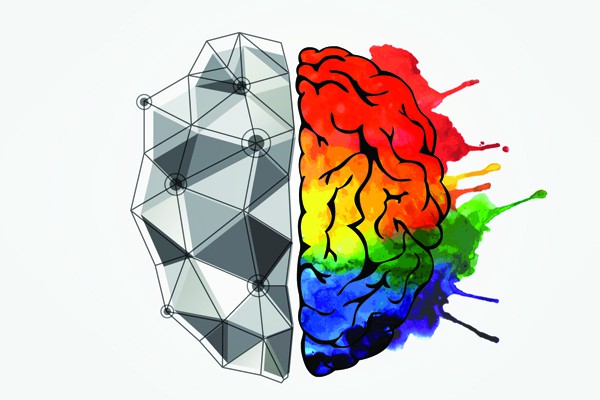How to Prototype Empathy In Your Brand Strategy to Boost More Brand Bonding
Fair weather fans are with (insert favorite sports team here) as long as they are winning, but fanatics — the die-hard, rain or shine, come hell or high water fans — are passionately committed to (insert favorite sports team here), win or lose. Which type of fan best describes your current customers? Which type of fan best describes the customers you want? These answers affect your brand strategy.
Fanaticism is the benchmark for brand bonding.
So how do you get there? How do you create emotional connections, deepen bonds, and promote advocacy to the point of fanaticism? Prototype! Just as you would with any worthwhile product or service experience. Engage in contextual inquiry with consumers, develop framed insights, ideate, and then validate through iterative testing. Learn how to leverage a point of view and context to empathize with your customers, and attract them with greater specificity and personalization.
Let’s take a moment to talk about the “E” word. The word empathy, the E-bomb if you will, is dropped into just about any conversation about customer relationship. So it’s probably important that we are aligned with a working definition of the all-powerful “E.” Empathy is the ability to understand and share the feelings of others; it’s about “putting yourself in someone else’s shoes,” so you experience the world as they do. To gain an empathetic relationship with our users we need to observe and communicate with them so we can then begin to comprehend their experiences, understand the context of their daily lives and how they think. “So,” you might think to yourself, “let’s just get some of that empathy people are talking about!” Unfortunately, it’s not that simple.
EMPATHY IS COMPLICATED
Empathy comes in two flavors:
1. Cognitive Empathy: Cognitive empathy is about understanding how someone feels. On this side of the spectrum, you might engage in contextual inquiry and have people tell you about their experience. As a result, you’re able to say “I understand how you feel,” but you’re removed from the situation emotionally.
2. Emotional Empathy: Emotional empathy is about feeling how someone feels. To realize emotional empathy, you experience a person’s reality with them or alongside them (in design, by using an immersive ethnography technique). In this way, you are sharing their emotional state, and can say “I feel those feelings with you.”
True empathy is experienced at the intersection of understanding (cognitive empathy) and feeling (emotional empathy). The trick is that the part of your brain that processes logic and cognition could not be more different than the part of your brain that processes emotion and primitive, fight-or-flight response. The brain, theoretically, is incapable of processing logic and emotion simultaneously. The section that allows us to emotionally engage with others is separate from where we process scientific and logical reasoning, and there is a built-in neural constraint that stops us from activating both areas at the same time. We literally can’t be emotional and logical at once. (Explains a lot, right?) And it’s part of the reason why innovators and product developers have to make sure their solutions appeal to both.
Next time you drop the E-bomb around the office, know which flavor of empathy you are referring to. There is a difference. Respect the difference. Only through engaging and balancing both types of empathy can you create meaningful and lasting (fanatic worthy) solutions. Fall out of balance, and you will find yourself out of touch and at risk of losing valuable customers.
Look at Apple right now (April 2017). The company’s marketing chief recently offered an apology to Mac Pro users for neglecting the product. The model had gone 1,202 days without a software update before the date of the apology, while design changes like a thinner profile and a touch bar and touch ID were introduced last year. They relied too much on the look and feel of the computer — the emotional appeal — but the user’s logical side realized that the quality wasn’t there anymore.
Prototyping empathy helps you achieve balance in your offering by activating user research in coordination with a point of view and context.
BUILD A SCRIPT INSTEAD OF A MODEL
Start by creating a script and use it to role play. Ethnographic research is flush with content that you need to make this happen. Think of your user as your character, and then you can begin to layer on the context that will inform their responses: time, place, setting, situation. Next, use opportunity statements to contextualize the variety of paths that the scenario might take: What if this? How might we this?
So say your character is named Tommy, for example. Tommy is a stay-at-home dad, and he does all the cleaning. Within that framework, we can layer on the context. What if Tommy has three young children? Knowing that you can imagine how Tommy might handle things differently with all those kids running around versus if he has no children, or maybe a dog instead. The more you script out the specific details of the situation, the more it will inform the emotional response. Even if you don’t have the capacity to unpack any emotional components initially, the logic you set up in the script will help guide you. And you can repeat the process with as many different scenarios, targeted users or personas that you have the wherewithal to come up with. Remember that your goal is to identify the conditions necessary to develop (or maintain) a meaningful bond with the customer (bonus points for forging fanaticism).
By going through this exercise and effectively putting yourself in the customer’s position, you will develop the skills necessary for you and your team to more accurately predict how customers might respond to a variety scenarios. Think of it as Method Acting for empathy. A method actor gains as much understanding about a character as possible (through research) to effectively become them.
Keep in mind that prototyping empathy is iterative and should be an ongoing exercise. Think about a new scenario to test each day. It is a process that never reaches (or nears) completion. Trust that with each new scenario you develop you will uncover something new. As you socialize each scenario with your team you will be given the opportunity to push, challenge and rewrite the script as necessary. An important byproduct of prototyping empathy is improved communication. The language you adopt to write “the script” and communicate internally will strengthen and clarify the message that will be shared externally with other stakeholders, and ultimately the customer.
Sometimes the reason products or solutions don’t resonate with consumers has more to do with how well you communicate what the product does for them, rather than the merit of the actual product itself. You may have an excellent product that offers a great solution to a difficult problem, but its success lies in your ability to explain how it satisfies some intrinsic user need that appeals to their emotions, to tell its story. The script(s) will help you tell the story and make the initial connection with your customer.
ALL IN THE TIMING
So, time does this funny thing: It passes. The predictive power of prototyping empathy will help you stay current and prepare for what’s next while strengthening what you have now. That said, if a product or solution is too far-reaching and disruptive, people will not adopt it because it lacks familiarity or feels foreign; it must be reasonably appropriate to the time and current conditions of use (Most Advanced Yet Acceptable). So, when prototyping empathy, consider consumer expectations and potential responses specific to time. Of course, if you have done your homework up to this point you may identify opportunities to move the threshold for acceptable deviation from the status quo.
Tesla’s solar roof product provides an excellent example of this balance of advanced technology with consumer acceptance. The company, perhaps most well-known for designing and manufacturing electric vehicles, announced their new roof tiles in October last year. While the general public has come to understand that clean energy is necessary, there have been barriers to implementation of renewable energy solutions, mainly because of cost and aesthetics. Other solar panel roof options are mostly considered eyesores by consumers; unsightly panels that are bulky and noticeably stick out from rooftops. So Tesla designed panels to look more like traditional roofing by hiding solar cells inside the roof shingles — and they created four different types of shingles to match different housing styles (textured glass tile, smooth glass tile, French slate tile, Tuscan tile). You can’t tell it’s a solar roof, and that’s the point. It may be a high-tech solution, but it’s designed to mimic what users are already accustomed to, and that familiarity makes it a lot easier for people to embrace the idea of converting.
Tesla solar roofs are slated to be introduced this year. As for the price tag, well, the exact cost has yet to be revealed, but it’s said to be in line with the competition.
THE ORGANIC EVOLUTION OF ADVOCACY
Relationships take work. Accept that your work is ongoing. Customer relationship is not a one-and-done achievement. You don’t get a trophy to place up on your mantle as a forever reminder of your accomplishments. You work hard to earn it (the relationship), and you keep working hard to maintain it. Build trust and forge a meaningful bond by actively seeking ways to meet specific customer needs. Prototyping empathy can help you tap into the specificity you will need to forge those meaningful bonds. The empathetic connections made by continually meeting and exceeding expectations will organically evolve into brand advocacy, create brand loyalty and promote brand evangelism.
Get started today. Do the research. Create the script. Prototype empathy to boost brand bonding and turn interaction into advocacy.












